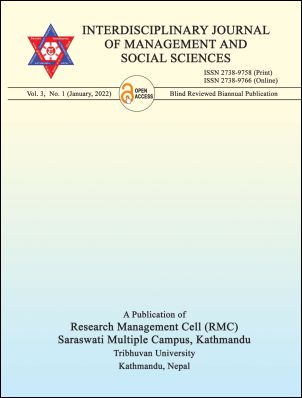Understanding of the Maoist Movement (1996-2006): The Large-scale and long-run Perspective
DOI:
https://doi.org/10.3126/ijmss.v3i1.50237Keywords:
Insurgent, Effort, Democracy, Long time, enormousgage, HistoryAbstract
In 2006 AD there was a massive changes; millions of people took to the streets calling for democracy and freedom. The 2006 Maoist movement is a one of the biggest movements in Nepal as known as a kind of revolution. It's known as political achievement against the direct power of king Gyanedra Shah who had an absolute power to control or rule for all people of Nepal. There have been various causes of that movement. There was hierarchy relationship of lower class and upper class, oppressed groups, peasant, state structure, bureaucracy and others. The Maoist movement of Nepal has been a product of its socio-economic and political context. This paper tries to analysis and explores the Maoist movement trough the large-scale and long run perspective. According to this perspective, there was various causes changed in both state institutions and social structures and its outcomes are still showing respectively, many outcomes have to be come. Past conflicts and institutional structures have long term effects and are of critical importance for later development and have large scale impact in structure. Large scale history defines its scope on major structures or international factors, defines the outcomes to be studied in larger terms; and the causes for these outcomes are determined by large structures, international ideology, psychology and others.

